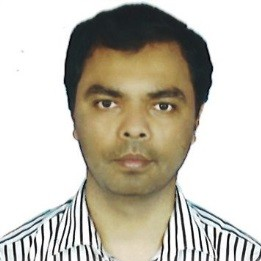Optical High-speed Information Technology
A special issue of Applied Sciences (ISSN 2076-3417). This special issue belongs to the section "Optics and Lasers".
Deadline for manuscript submissions: closed (28 February 2019) | Viewed by 19507
Special Issue Editor
Interests: laser ablation; induction plasma synthesis; photoluminescence; Raman spectroscopy; semiconductor optics; chemical vapor deposition; time-resolved spectroscopy; pump–probe spectroscopy; photoluminescence excitation spectroscopy; laser–matter interactions
Special Issues, Collections and Topics in MDPI journals
Special Issue Information
Dear Colleagues,
The field of optical high-speed information technology includes a wide range of topics, starting from basic to advanced research and technological applications, which have been given significant interest by different sectors. The successful demonstration of semiconductor lasers for optical communication stimulated a series of development in optoelectronics, including vertical-cavity surface-emitting lasers, light emitting diodes, semiconductor optical amplifiers, etc. Semiconductor structures, such as quantum wells, quantum wires, quantum dots, etc., with emissions corresponding to the desired wavelength for use in fiber optical telecommunication systems, have been investigated using various techniques including photoluminescence, time-resolved photoluminescence, photoluminescence excitation spectroscopy, and other ultra-fast optical spectroscopy, such as optical pump-optical probe spectroscopy, optical pump-terahertz probe spectroscopy, time-resolved excitation-correlation spectroscopy, etc. Furthermore, security in high speed and massive information transmissions are a major issue for this rapidly-evolving information-oriented culture. The rapid upgrading of digital computer technology can result in a fast decoding of standard code for scrambling data in secure communication systems, which can lead to eavesdropping. Research on quantum computing and communication methodology have also been evolving and have attracted significant attention from the global scientific and technological community. Alternatively, semiconductor laser based optical chaotic communication systems have been proposed to be efficient potential candidates for secure information processing technology due to the high speed and broadband capabilities with optical encoding and decoding.
The current Special Issue is formulated for articles presenting both reviews of most recent research outcomes and original research papers in the field of optical high-speed information technology. The research topics are not strictly restricted to the aforementioned research fields and can also cover wide range of related research fields, such as fiber optics, quantum computing, chaos, chaotic systems, synchronization of chaos, encoding and decoding, cryptography, optical communication, optoelectronic device fabrication and characterization, fiber materials, semiconductors, high electron mobility transistors (HEMT), and new relevant technological advancements.
Dr. Antaryami Mohanta
Guest Editor
Manuscript Submission Information
Manuscripts should be submitted online at www.mdpi.com by registering and logging in to this website. Once you are registered, click here to go to the submission form. Manuscripts can be submitted until the deadline. All submissions that pass pre-check are peer-reviewed. Accepted papers will be published continuously in the journal (as soon as accepted) and will be listed together on the special issue website. Research articles, review articles as well as short communications are invited. For planned papers, a title and short abstract (about 100 words) can be sent to the Editorial Office for announcement on this website.
Submitted manuscripts should not have been published previously, nor be under consideration for publication elsewhere (except conference proceedings papers). All manuscripts are thoroughly refereed through a single-blind peer-review process. A guide for authors and other relevant information for submission of manuscripts is available on the Instructions for Authors page. Applied Sciences is an international peer-reviewed open access semimonthly journal published by MDPI.
Please visit the Instructions for Authors page before submitting a manuscript. The Article Processing Charge (APC) for publication in this open access journal is 2400 CHF (Swiss Francs). Submitted papers should be well formatted and use good English. Authors may use MDPI's English editing service prior to publication or during author revisions.
Keywords
- Fiber optics
- Quantum computing
- Chaos
- Chaotic systems
- Synchronization of chaos
- Encoding and decoding
- Cryptography
- Optical communication
- Optoelectronic device fabrication and characterization
- Fiber materials
- Semiconductors
- High electron mobility transistors (HEMT)
Benefits of Publishing in a Special Issue
- Ease of navigation: Grouping papers by topic helps scholars navigate broad scope journals more efficiently.
- Greater discoverability: Special Issues support the reach and impact of scientific research. Articles in Special Issues are more discoverable and cited more frequently.
- Expansion of research network: Special Issues facilitate connections among authors, fostering scientific collaborations.
- External promotion: Articles in Special Issues are often promoted through the journal's social media, increasing their visibility.
- e-Book format: Special Issues with more than 10 articles can be published as dedicated e-books, ensuring wide and rapid dissemination.
Further information on MDPI's Special Issue polices can be found here.





